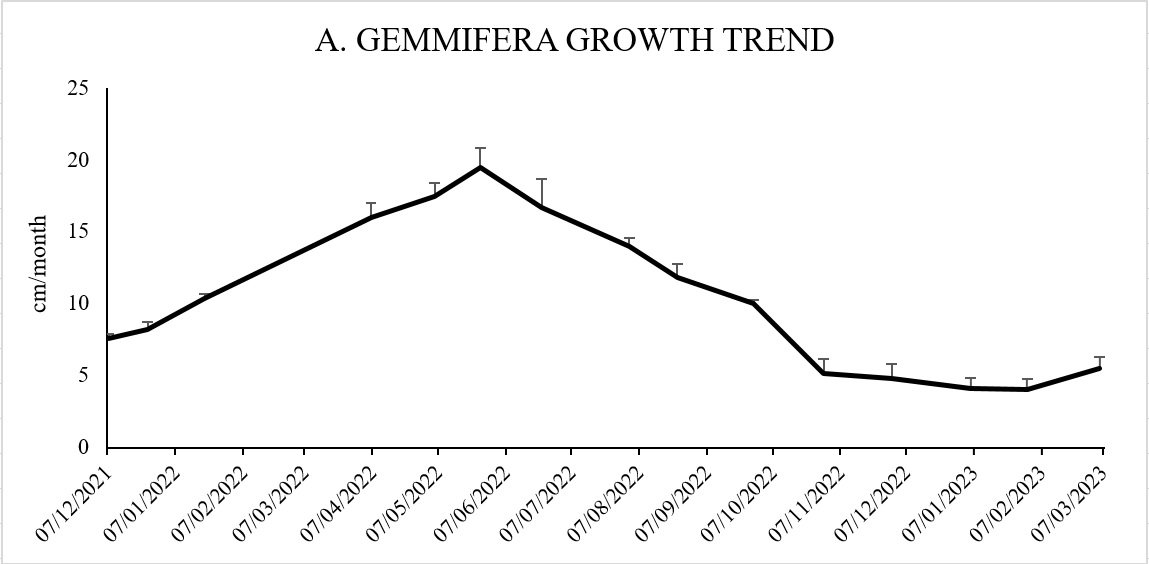CORAL MICRO-FRAGMENTATION REPORT
With the alarming degradation of coral reefs, passive and active coral restoration projects are increasing worldwide. Active coral restoration is essential in those areas that are highly impacted and degraded, and that will hardly recover naturally. Both passive and active restorations are crucial components of a conservation strategy that seeks to optimise either biodiversity conservation or ecosystem services provision.
In the Maldives, coral restoration is a less common practice than one would expect, in this stage, it is vital to experiment with new methodologies and analyse the results to determine the most effective practice for the area.
The Coral Micro-fragmentation Project in Villimale’ Island started in November 2021 and was funded by CFLI for the duration of 1 year. During this year, six different species of corals have been fragged and attached to two different typologies of substrates. Throughout the project, they have been monitored monthly and attended to weekly.
The aims of this study were to experiment with a new methodology for coral restoration and to analyse the performance of the protocol in the area.
The coral species selected for the project were 4 species from the family Acroporidae: Acropora tenuis, Acropora gemmifera, Acropora humilis and Acropora digitifera; and 2 species from the family Pocilloporidae: Pocillopora meandrina and Pocillopora verrucosa.
All of these species have been attached to cement plugs of 5cm diameter, except for the A. humilis which was attached on a natural substrate.
The fragments have been cut ≤ 1cm with a Gryphon XL Aquasaw and 42′ diamond tipped stainless steel blade and attached to cement plugs or natural substrate with super glue. The micro-fragments were glued in proximity to each other, fitting 3-4 fragments per plug.
For the first 4 months, the plugs have been covered by a dome to prevent predators to have easy access to the small fragments. The dome was realised with PVC pipes and mesh. The plugs and natural substrate have been weekly cleaned with bamboo brushes and once a month, data were collected using the underwater camera Olympus TG6 and a meter. Later on, the pictures have been analysed using ImageJ Software to evaluate the area covered by the fragments.
After a total of 14 months of monitoring, we can conclude that the micro-fragmentation is a fascinating and effective method to grow corals, but the success of the project is strictly dependent on the environmental conditions and the predatory pressure. In fact, using such small coral fragments, they resulted to be very sensitive and fragile, much more than an average fragment of 5-10cm.
This experiment obtained the best result with the A. humilis attached to a natural substrate.
Starting from 8 groups of micro-fragments, we lost 3 groups due to predation, but the 5 left grew and merged, covering half the substrate available.
The A. tenuis registered the best performance among the Acroporas attached on plugs. It showed slow but regular growth; at the end of the monitoring period, it more than doubled the area covered. We registered a loss of 3 plugs out of 6, due to misplacing on the mash and rough weather.
The other Acroporidae species showed good results as well, but the growth was interrupted around the month of May-June due to the pick in temperatures registered for that period and the rough weather which pushed some of the plugs off the mesh.
As for the Pocilloporidae, the growth was quite slow and in the last months, they have been affected by diseases leading to a decrease in size.
We can conclude that for our site, the micro-fragmentation can be a good methodology only if integrated with an initial ex-situ part, where the micro-fragments consolidate on the substrate in a tank, without any environmental stress.
Also, due to the very shallow depth on the reef flat of Villimale’ (1.5-2m), keeping the plugs on the mash resulted challenging especially with rough weather and better solutions should be developed to increase the performance of the methodology.
In general, the method resulted to be more effective with Acroporas rather than with Pocilloporas, and the natural substrate appeared more stable and successful.
The corals that grow on the plugs will be relocated to the reef to contribute to the restoration of the area as juveniles of coral.
















